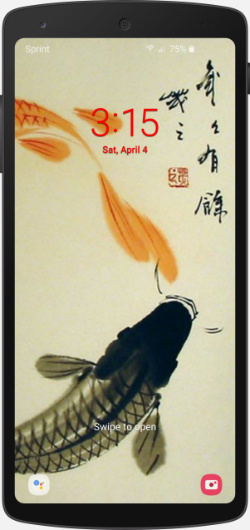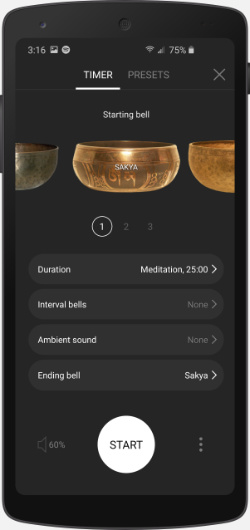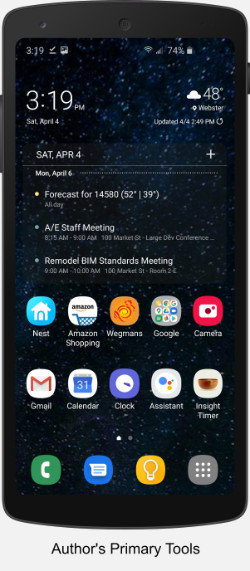Sitting vs. Smartphone: Throwing Insight Timer, Etc., to the Mat

While smartphone use, described in the title of an article in The Atlantic as “The Cigarette of This Century,” isn’t quite on the level of the opioid crisis, arguments could be made that excessive smartphone use, and the resulting dependence, is just as alarming. Nevertheless, we can benefit from using these devices so long as we are aware of the pitfalls inherent in using smartphones, namely their distractive, habit-forming tendencies.
I know these pitfalls all too well. I had previously avoided social media apps like Facebook and Twitter just out of lack of interest. But the many sleepless nights caused by my first daughter’s irregular sleep patterns were stressful, and I would often escape through the Internet. What started off as simply watching videos on YouTube turned to forming new interests online, and branched into wanting to connect with other people on social media, thus completing the trifecta of my dependence on my smartphone for relief. I was hooked.
These new habits came to a head when I realized that I was more interested in checking my Twitter news feed than what was going on at home. The excessive phone use was taking me away from my family and distracting me at work. Then, during one fateful Term Intensive held at the Zen Center, I ditched the superfluous features of my phone, and as a result, noticed a huge difference in my quality of life.
What is it about smartphones and their apps that makes them so alluring?
The answer is simple: they’re intentionally designed to be habit-forming, preying on our most basic human needs and instincts. It’s hardly a secret that software developers design their apps to provide enticing prompts, notifications, and rewards to manipulate our attention, hook us, and keep us coming back for more.
According to Nir Eyal, author of Hooked: How to Build Habit-Forming Products, developers accomplish this by incorporating four elements into their programs: triggers, actions, variable rewards, and investments.
Triggers cue users to take action. For example, the ringing of your phone is triggering you to answer it. Action is the ability to have the appropriate response to those triggers (in this example, answering the phone). Variable rewards come in many forms: social rewards and validation (such as “likes” on Facebook), material rewards (monetary prizes for completing an online game), and self-rewards (mastering a new skill). Lastly, there’s investment in the app. Investment is the time and energy the user puts into the app that keeps them using that product. For example, if you’ve uploaded all of your family photos to Google Photos, you’re not likely to switch platforms.

Insight Timer has, of course, a meditation timer, but it also incorporates the same type of habit-forming design as other apps. The feature that got me hooked was its Consecutive Days tracker, which tracks all your meditation sessions. All that data is available for you to browse, with your total meditation time broken out by days, months or the past year, including longest sessions, the average session lengths and more. As an engineer, I can’t help browsing all this data with zeal!
An ingenious feature of the timer is this: every tenth consecutive day, you get a nice little reward: a milestone badge in the shape of a gold star. If you get 5 milestones, your gold badge turns red, and if you get 25 milestones it turns green. It’s all very exciting! This combination of badges, notification, and a sense of progress were enough to keep me hooked.
There were definitely nights I didn’t want to sit at all—either I was too tired or out of town for work. More often than not, what got me to sit those nights was not the fear of “the certainty of death, and the uncertainty of the time of death,” but the fear that I would break my consecutive streak and have to start all over again. I really liked those green badges!
The social media aspect of the app is a slippery slope. You can join groups, post and like comments, find friends, and send messages to other users. This comes with the same risks as any other social media app. By connecting with other users and engaging in dialogue, the app then becomes less about meditation and more about social engagement, tempting users to check their social media notifications instead of meditating. I avoid this feature to some extent; however, I did recently join a few local meditation groups, including the Rochester Zen Center group, which hasn’t had much activity in the last two years.
Lastly, the app provides a sense of progress by reporting your accumulated hours of sitting. While it may not feel like it at times, I can see the steady increase of hours. Sometimes that’s all it takes for me to put aside striving for goals and return to just sitting for its own sake.
However, using an app like Insight Timer to support your practice may mean making some adjustments to your phone to make sure that the distracting aspects of your device don’t get in your way. Recent upgrades to Android phones feature a “Wind Down” mode that enables the Do Not Disturb feature and changes your phone’s screen color to grayscale. This color change mutes the bright neuro-stimulating colors of your phone—a very useful function first thing in the morning. The lack of color makes those red notification bubbles in the corner of most apps less appealing. (Apple phones have “Downtime.”)

- Basic day-to-day tools for navigating your day, including your calendar, maps, and of course your phone app, which he calls “Primary Tools.”
- Non-essential apps such as reading apps, podcasts, meditation and yoga apps, music, etc. he calls “Aspirations.”
- “Slot Machines” are apps like Facebook and Instagram. These are the addictive apps that provide random rewards.
Stubblebine recommends having only Primary Tools and Aspirations visible on your home screen, requiring additional effort to access your Slot Machine apps. I’ve arranged my phone this way, but with Aspiration apps on a different home screen. Insight Timer is the exception, prominently displayed on my home screen so that I don’t have to swipe to find it and risk happening upon anything else that could be distracting.
Insight Timer can be modified to minimize distractions, too. In the app’s settings, you can set the default screen to be the timer; otherwise it will default to the app’s main splash screen, which has recommended meditation courses and status updates from other users. You can set the app to Night Mode, which darkens the screen, making it less bright in the evenings and mornings. Notifications, like the milestones and friend requests, can also be turned off.
For those of us whose primary practice is sitting at home, Insight Timer could provide the spur needed to keep a daily sitting routine going, especially during the lows and plateaus of Zen practice. Introducing a smartphone into our practice has its risks, but through careful planning and settings we can limit, but not entirely remove, the distracting nature of the phones and apps and continue our sitting, one badge at a time. Instead of being used by the devices, we can use them to create an effective daily practice.
Whatever the causes and conditions, I am happy to report that as of this writing, I have sat consistently every day for almost 15 months.
—Sam Scorsone ■